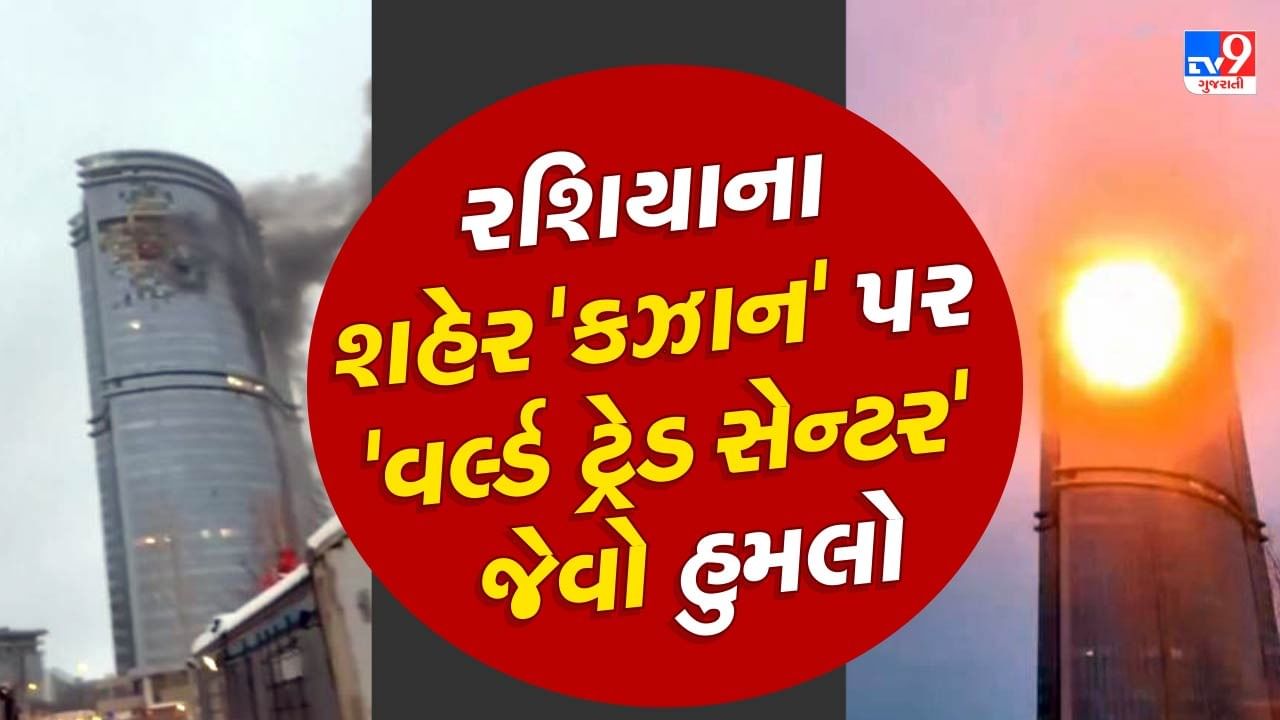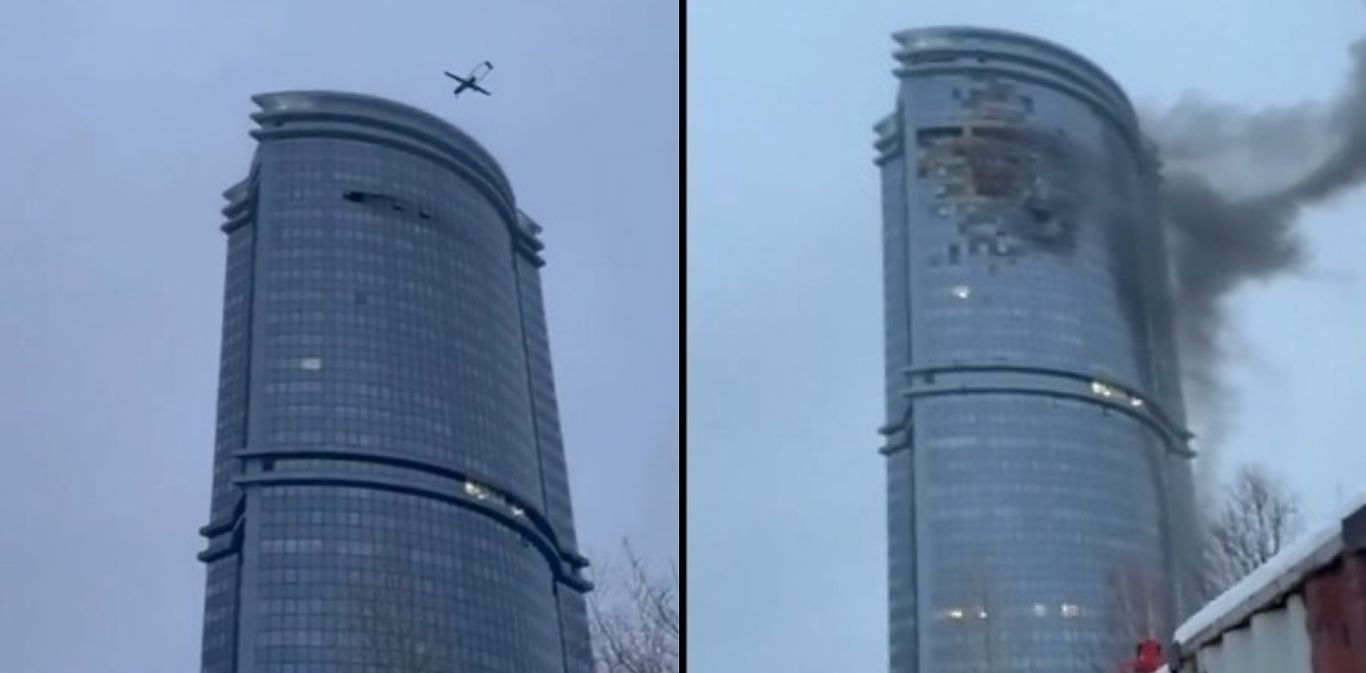Kazan drone attack represents a significant event demanding careful analysis. The incident, shrouded in initial uncertainty, quickly escalated into a complex situation involving potential geopolitical ramifications and technological considerations. Understanding the circumstances surrounding this attack requires examining the reported targets, the extent of damage, and the potential actors involved, as well as analyzing the broader context within which it occurred.
A thorough investigation into the technological aspects of the drones used and the official response is crucial to fully comprehending the event’s impact.
This analysis will delve into the timeline of events, explore potential perpetrators and their motives, assess the immediate and long-term consequences, and examine the technological capabilities of the drones employed. Furthermore, we will contextualize the attack within the broader geopolitical landscape, considering its potential impact on regional stability and international relations. By examining these aspects, a clearer picture of the Kazan drone attack emerges, highlighting both its immediate effects and its potential for long-term implications.
Kazan Drone Attack: An Analysis
The reported drone attack on Kazan, while still under investigation, presents a complex event with implications for regional security and technological warfare. This analysis examines the event’s circumstances, potential actors, impact, technological aspects, and geopolitical context, providing a comprehensive overview of this significant incident.
The Event: Kazan Drone Attack Overview
Reports emerged of a drone attack targeting several locations within Kazan. While precise details remain scarce due to ongoing investigations, initial reports suggested multiple drones were involved, potentially employing a coordinated attack strategy. The targets, according to preliminary information, included civilian and potentially governmental infrastructure. The extent of damage, both physical and to public morale, is still being assessed.
The timeline of events is still unfolding, but initial reports surfaced on [Insert Date and Time of Initial Reports]. Subsequent updates provided more details regarding the number of drones, targets hit, and the overall scope of the incident. Official statements from authorities are expected to clarify the situation further as investigations progress.
The recent drone attack on Kazan highlights the growing concern over unauthorized drone activity. Incidents like these underscore the need for robust drone safety regulations, a point emphasized by the unfortunate florida drone accident which showcased the potential for civilian harm. Ultimately, both events serve as stark reminders of the importance of responsible drone operation and effective countermeasures to prevent future attacks and accidents.
| Date | Time | Location | Description of Event |
|---|---|---|---|
| [Insert Date] | [Insert Time] | [Insert Location 1] | [Insert Description of Event 1] |
| [Insert Date] | [Insert Time] | [Insert Location 2] | [Insert Description of Event 2] |
| [Insert Date] | [Insert Time] | [Insert Location 3] | [Insert Description of Event 3] |
| [Insert Date] | [Insert Time] | [Insert Location 4] | [Insert Description of Event 4] |
Attribution and Responsibility

Determining responsibility for the Kazan drone attack requires careful consideration of several potential actors and their motives. The methodology employed – the type of drones used, their flight paths, and the targets selected – offer crucial clues. Analysis of these factors can help narrow down the field of potential perpetrators.
The recent drone attack on Kazan highlights the evolving threat of unmanned aerial vehicles. This incident underscores the need for robust counter-drone measures, a stark contrast to the seemingly benign spectacle of a coordinated drone display, such as the impressive orlando drone show. The Kazan incident serves as a potent reminder that the same technology capable of breathtaking artistry can also be weaponized.
This incident can be compared to other similar drone attacks globally, such as those in [mention relevant examples of drone attacks], to identify potential similarities in tactics, technology, and targeting strategies. These comparisons can help assess whether the Kazan attack aligns with the operational characteristics of known groups or actors.
| Potential Actor | Motive | Evidence (or lack thereof) |
|---|---|---|
| [Potential Actor 1] | [Motive 1] | [Evidence supporting or refuting involvement] |
| [Potential Actor 2] | [Motive 2] | [Evidence supporting or refuting involvement] |
| [Potential Actor 3] | [Motive 3] | [Evidence supporting or refuting involvement] |
Impact and Response
The immediate impact of the drone attack included disruption to daily life, potential injuries, and damage to infrastructure. The official response from Russian authorities likely involved immediate security measures, investigations, and public statements aimed at calming public anxieties and assuring citizens of their safety.
The long-term consequences could encompass increased security measures, shifts in public perception, and potential diplomatic repercussions. International responses will likely depend on the confirmed attribution and the scale of the damage.
- Immediate Response: Emergency services deployment, securing the affected areas, initial investigations.
- Short-term Response: Further investigations, damage assessments, security upgrades, public statements from authorities.
- Long-term Response: Policy changes regarding drone regulations, potential international diplomatic consequences, and ongoing security enhancements.
Technological Aspects

The drones potentially used in the attack likely possessed specific technological capabilities enabling their deployment and targeting. Understanding these capabilities, including range, payload capacity, navigation systems, and evasion techniques, is crucial for assessing the sophistication of the attack and potential countermeasures.
Countermeasures could involve improved air defense systems, drone detection technologies, and enhanced cybersecurity measures to prevent future attacks. Analyzing the technology used can inform the development of more effective defenses.
- Drone Type: [Specify potential drone type(s) and their known capabilities]
- Range: [Estimate the range of the drones used]
- Payload Capacity: [Estimate the payload capacity of the drones]
- Navigation System: [Describe the potential navigation systems used]
- Evasion Techniques: [Discuss potential evasion techniques employed]
Geopolitical Context, Kazan drone attack

The Kazan drone attack must be viewed within the broader geopolitical context of the region, considering existing tensions and power dynamics. The potential motivations behind the attack could range from political statements to attempts to destabilize the region. Analyzing similar incidents in the region helps to understand the broader trends and patterns.
The incident’s potential impact on regional stability and international relations is significant. The response from neighboring countries and international organizations will depend on the confirmed perpetrators and the scale of the attack. It could potentially escalate tensions or trigger further retaliatory actions.
Visual Depiction of the Event
A bird’s-eye view of the attack might depict multiple drones, possibly of different sizes and designs, approaching their targets from various directions. The drones’ flight paths would likely be calculated to avoid detection and maximize impact. The surrounding environment would show a mix of urban and potentially industrial areas, highlighting the vulnerability of key infrastructure to such attacks.
An image of the aftermath might depict damaged buildings, emergency vehicles, and possibly injured individuals. The scene would convey a sense of chaos and disruption, emphasizing the emotional impact on witnesses and the scale of damage inflicted. The image would likely showcase the destructive potential of even small drones when used in a coordinated manner.
The Kazan drone attack serves as a stark reminder of the evolving nature of modern warfare and the potential for technological advancements to reshape conflict. The incident underscores the need for robust countermeasures and a comprehensive understanding of the geopolitical factors that contribute to such events. Further investigation is needed to definitively determine responsibility and fully assess the long-term consequences, both domestically within Russia and internationally on regional stability.
The incident highlights the increasing vulnerability of civilian infrastructure to drone attacks and the urgent need for enhanced security measures.
Helpful Answers: Kazan Drone Attack
What type of drones were potentially used?
Specific drone models remain unconfirmed pending investigation, but speculation points to commercially available drones modified for offensive capabilities.
Were there any casualties reported?
Information regarding casualties varies depending on the source, requiring further verification from official channels.
What was the official response to the attack?
The recent drone attack on Kazan highlights the increasing vulnerability of civilian areas to unmanned aerial vehicles. This incident underscores the need for robust counter-drone measures, especially considering the potential for widespread disruption, as seen in a similar, albeit less malicious, incident: the orlando drone show malfunction , which showcased the unpredictable nature of even carefully planned drone operations.
The Kazan attack serves as a stark reminder of the serious implications of drone technology when misused.
Authorities initially downplayed the event, but subsequent statements indicated investigations are underway and security measures are being strengthened.
